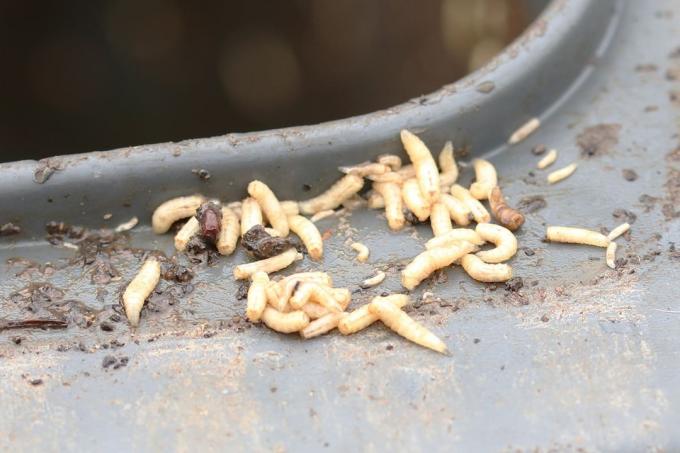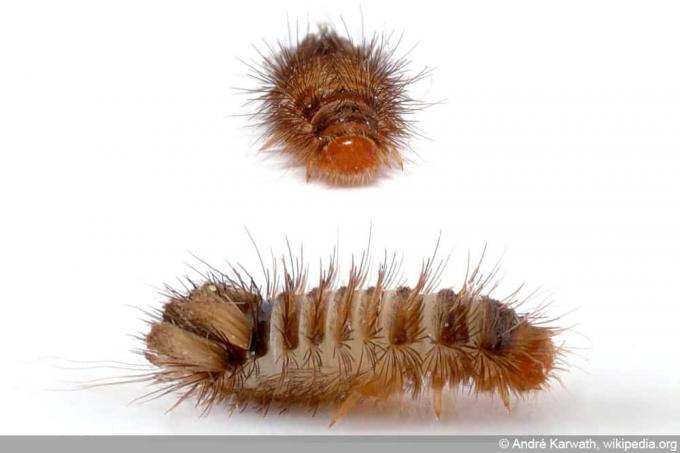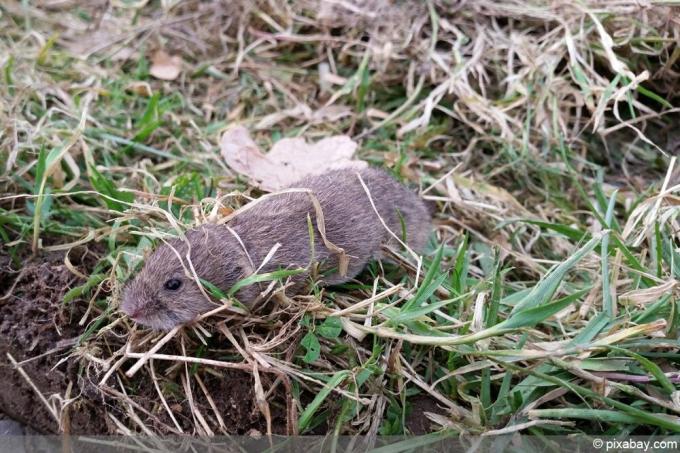

Table of contents
- Biobin powder - what is that?
- How does the powder work?
- rock flour
- kieselguhr
- slaked lime
- microorganisms
- Alternatives to deadly pesticides
Nobody likes maggots in the compost bin. Nevertheless, with a probability bordering on certainty, they will always come to light. With organic waste bin powder, however, you can effectively avoid visitors.
Biobin powder - what is that?
High-quality powders for the compost bin do not require any chemicals, such as deadly pesticides. Instead, the basis of all substrates is an individual mixture of the following components:
- rock flour
- kieselguhr
- slaked lime
- microorganisms
How does the powder work?
In order to understand the effect of organic waste bin powder, let's take a look at the function of the individual components:
rock flour
Finely ground rock has an extremely high surface area on which it binds moisture. Its main task is therefore the absorption and binding of moisture escaping from the organic waste.
kieselguhr
This substance is made from the fossil remains of calcareous mussel shells, the "Gur" as part of a burning process. In addition to the binding of moisture through an extremely high surface area of the microcrystalline substance, its biocidal effect is particularly valued in the compost bin. Due to its intensive drying effect, kieselguhr is used against bacteria and other germs. In addition, due to its sharp-edged particles, it is able to kill the larvae even after the substance has been consumed by intensively injuring the digestive tract.
slaked lime
Calcium hydroxide is formed by "slaking" burnt lime with water. The resulting slaked lime is able to bind large amounts of moisture. In this reaction, it develops a highly caustic effect due to its high alkalinity. It has the task of a disinfectant against putrefactive bacteria and other microorganisms in organic waste.
microorganisms
On the one hand, the microorganisms in the organic waste are killed, on the other hand, tiny creatures are added again.
How does that fit together?
The added microorganisms do not feed on the biomass of the kitchen waste, but use its undesirable decomposition products, which attract flies. The task of the microorganisms is therefore primarily to reduce the pungent smell. This serves as the main attractant for all the types of flies that lead to unwanted maggot infestation by laying their eggs.
All these functions are aimed at creating an environment that is as unattractive as possible for flies, so that other places for laying eggs are preferred.

Alternatives to deadly pesticides
In addition to ready-made compost bin powders, you also have the option of using some equally effective home remedies against maggots.
First and foremost are the individual components of the powder in their pure form. Rock dust, siliceous material and slaked lime are freely available as a pure substance and can of course also be distributed with the organic waste.
DANGER:
Pure slaked lime can cause injuries to skin and eyes due to its highly caustic effect. Be sure to wear protective gloves and goggles when using it!
In addition, other substances available in every household can also be used wonderfully to keep maggots away:
vinegar water
Spray on all inner surfaces of the compost bin and allow to dry - drives away flies and caterpillars with a strong acidic smell
Essential Oils (lavender oil / tea tree oil)
Lay a soaked cloth around the edge of the bin and clamp it with the lid – scents keep flies away
pepper
Scatter over each layer of biowaste - expels maggots from the biomass
Tip:
Home remedies are usually less effective than real organic bin powder. You should therefore use home remedies, especially for smaller barrel sizes. The more organic waste you have, the more likely it is to use the professionally mixed powder right from the start.
 Home editorial office
Home editorial office
Learn more about home pests

Red maggots / larvae in the apartment: what to do?
Red maggots in your own home are the ultimate nightmare sight. A few crippling seconds of shock are allowed. But then decisive and effective action must be taken to make them disappear. But who exactly is "the red enemy" and how is the fight fought?

Combat earwigs | 5 remedies against earworms in the apartment
Although earwigs, Dermaptera in Latin, are completely harmless and actually useful animals, the insects are still a cause for panic for many people when they appear in the apartment. Here you can find out how to get rid of the unloved crawlers.

Ants in the brickwork: you can do that now
Ants are useful insects, if they are in masonry they can cause damage to an object. An infestation is not easy to recognize, but if the first signs appear, you should act immediately. Simple home remedies are usually sufficient to drive away the insects.

Identify and fight fleas in the home
Even the thought of fleas in the home is uncomfortable. After all, we associate uncleanliness with annoying insects. They are considered carriers of dangerous diseases. Where are you from? What are the signs of a flea infestation? How do you get rid of them?

Fighting maggots on the ceiling | 7 tips for all rooms
Bedroom, kitchen or pantry, wall or ceiling - anyone who discovers maggots in the house wants to get rid of them quickly. With our help, you can do it quickly and without professional pest control.

Fighting mice in the garden 8 tips against mouse holes
Suddenly the earth sags and the roots of the vegetable plants are bare? Then there is a high probability that mice have nested in the garden. Although the rodents cause a great deal of damage in the beds and on the lawn, the gardener is just as reluctant to kill them. Biological measures are the solution, because mouse holes can also be fought without chemicals.

